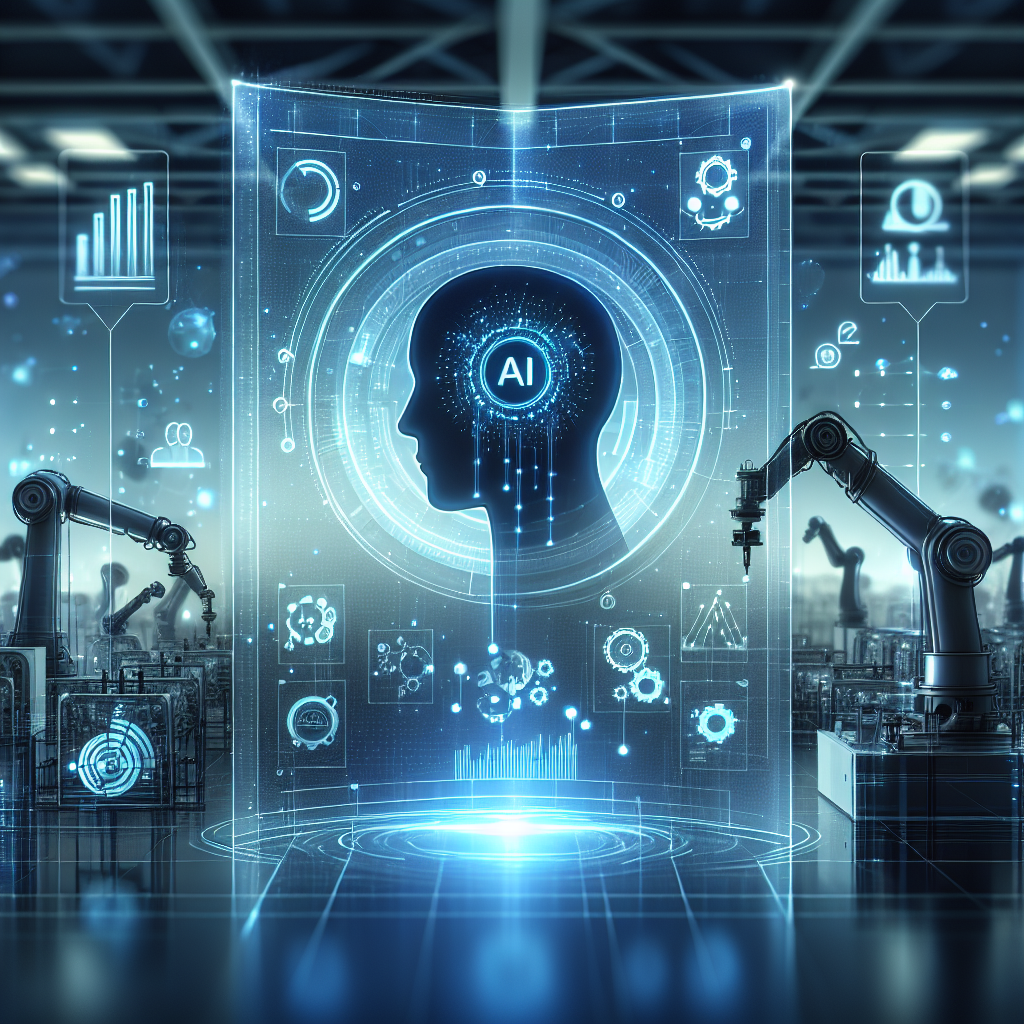Introduction
In recent years, artificial intelligence (AI) has become a game-changer in the field of predictive maintenance. By harnessing the power of machine learning algorithms, AI solutions can analyze data in real-time to predict when equipment is likely to fail, allowing for proactive maintenance to be carried out before costly breakdowns occur. As technology continues to advance, the future of AI solutions in predictive maintenance looks promising, with new innovations and capabilities on the horizon.
The Current Landscape of AI Solutions in Predictive Maintenance
Currently, AI solutions in predictive maintenance rely on a combination of historical data, real-time sensor data, and machine learning algorithms to predict when equipment is likely to fail. By analyzing patterns in the data, AI algorithms can identify early warning signs of potential failures, allowing maintenance teams to take proactive action.
One of the key benefits of AI solutions in predictive maintenance is their ability to adapt and learn from new data. As more data is collected over time, AI algorithms can continuously improve their predictions, making them more accurate and reliable. This adaptive nature of AI solutions makes them well-suited for dynamic environments where equipment conditions can change rapidly.
In addition to predictive maintenance, AI solutions can also be used for prescriptive maintenance, which involves recommending specific actions to be taken to prevent equipment failures. By analyzing historical data and maintenance records, AI algorithms can identify the most effective maintenance strategies for a given piece of equipment, helping maintenance teams optimize their maintenance schedules and reduce downtime.
The Future of AI Solutions in Predictive Maintenance
As technology continues to evolve, the future of AI solutions in predictive maintenance looks bright, with several key trends and innovations shaping the landscape:
1. Integration with Internet of Things (IoT) devices: As more and more devices become connected to the internet, AI solutions in predictive maintenance will be able to access a wealth of real-time sensor data from a wide range of equipment. By integrating with IoT devices, AI algorithms can provide even more accurate predictions and recommendations for maintenance teams.
2. Enhanced predictive analytics: Future AI solutions in predictive maintenance will likely leverage advanced analytics techniques, such as deep learning and neural networks, to improve their predictive capabilities. These techniques can handle larger and more complex datasets, allowing AI algorithms to identify subtle patterns and correlations that may be missed by traditional machine learning algorithms.
3. Predictive maintenance as a service: With the rise of cloud computing and software as a service (SaaS) models, predictive maintenance solutions are increasingly being offered as a service. This allows companies to access AI-powered predictive maintenance capabilities without the need to invest in expensive hardware or software infrastructure.
4. Autonomous maintenance: In the future, AI solutions in predictive maintenance may become fully autonomous, with the ability to automatically schedule maintenance tasks, order replacement parts, and even carry out repairs without human intervention. This level of automation can help companies streamline their maintenance operations and reduce costs.
5. Integration with other business systems: Future AI solutions in predictive maintenance will likely be integrated with other business systems, such as enterprise resource planning (ERP) and asset management software. This integration can provide maintenance teams with a comprehensive view of equipment health and maintenance history, helping them make more informed decisions.
Frequently Asked Questions (FAQs)
Q: How accurate are AI predictions in predictive maintenance?
A: The accuracy of AI predictions in predictive maintenance can vary depending on the quality and quantity of data available, as well as the complexity of the equipment being monitored. In general, AI algorithms can achieve high levels of accuracy, especially when trained on large datasets and optimized for specific maintenance tasks.
Q: How can companies get started with AI solutions in predictive maintenance?
A: Companies looking to implement AI solutions in predictive maintenance should start by identifying their maintenance objectives and collecting relevant data from their equipment. They can then work with vendors or consultants to develop and deploy AI algorithms that are tailored to their specific needs.
Q: What are the benefits of using AI solutions in predictive maintenance?
A: Some of the key benefits of using AI solutions in predictive maintenance include reduced downtime, lower maintenance costs, improved equipment reliability, and increased operational efficiency. By proactively identifying and addressing potential equipment failures, companies can avoid costly breakdowns and maximize the lifespan of their assets.
Q: What are the challenges of implementing AI solutions in predictive maintenance?
A: Some of the challenges of implementing AI solutions in predictive maintenance include data quality issues, lack of expertise in data analytics, and resistance to change from maintenance teams. Companies may also face challenges in integrating AI solutions with existing business systems and processes.
Q: How can companies measure the ROI of AI solutions in predictive maintenance?
A: Companies can measure the ROI of AI solutions in predictive maintenance by tracking key performance indicators such as maintenance costs, equipment uptime, and overall equipment effectiveness. By comparing these metrics before and after implementing AI solutions, companies can quantify the benefits of predictive maintenance and justify their investment.
Conclusion
The future of AI solutions in predictive maintenance looks promising, with new technologies and capabilities on the horizon. By harnessing the power of AI algorithms, companies can proactively identify and address potential equipment failures, reducing downtime, lowering maintenance costs, and improving operational efficiency. As technology continues to evolve, we can expect to see even more advanced AI solutions in predictive maintenance that leverage IoT devices, advanced analytics techniques, and autonomous capabilities to revolutionize the way maintenance is conducted. By staying ahead of these trends and embracing the potential of AI solutions, companies can position themselves for success in an increasingly competitive marketplace.

